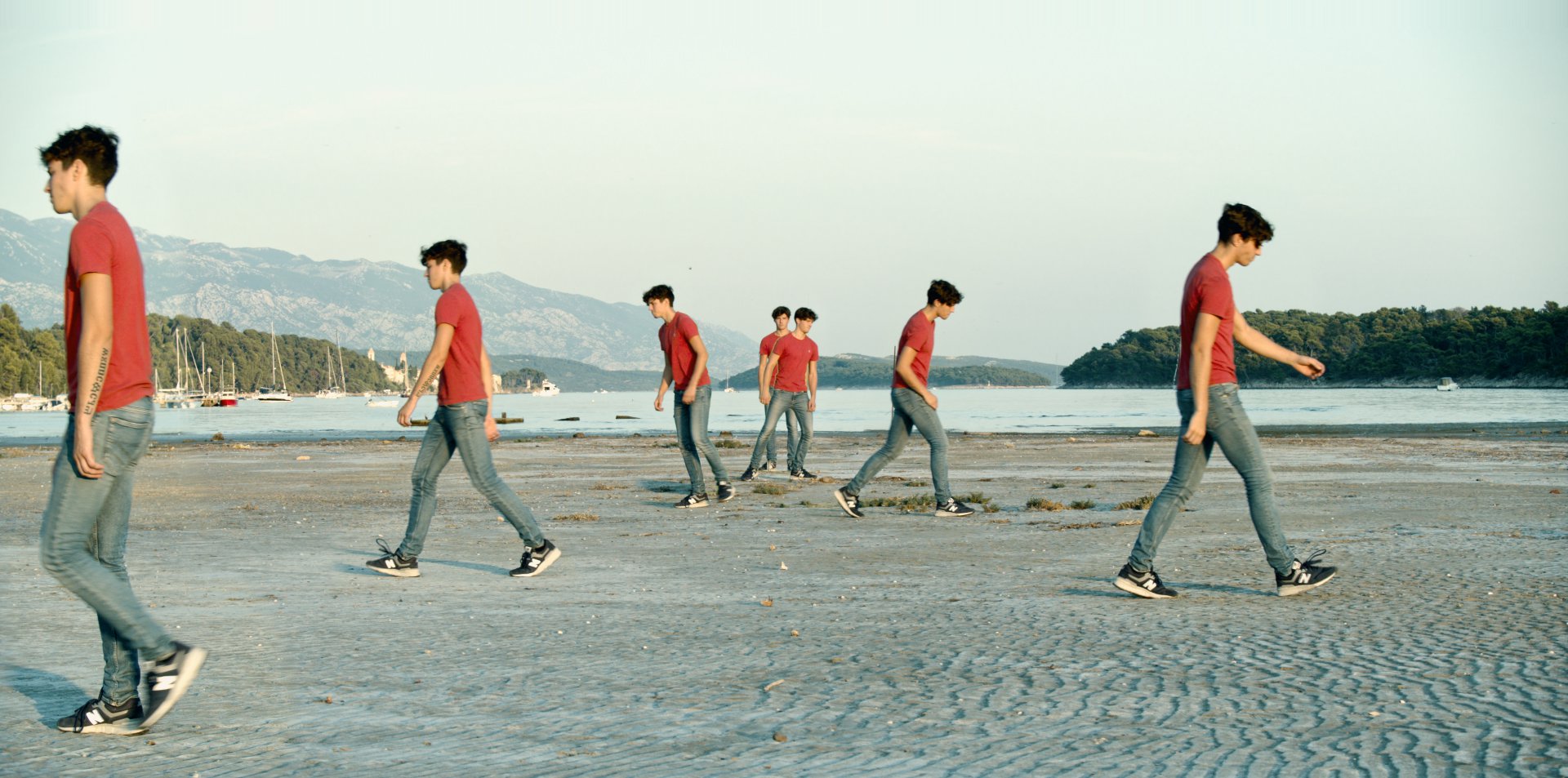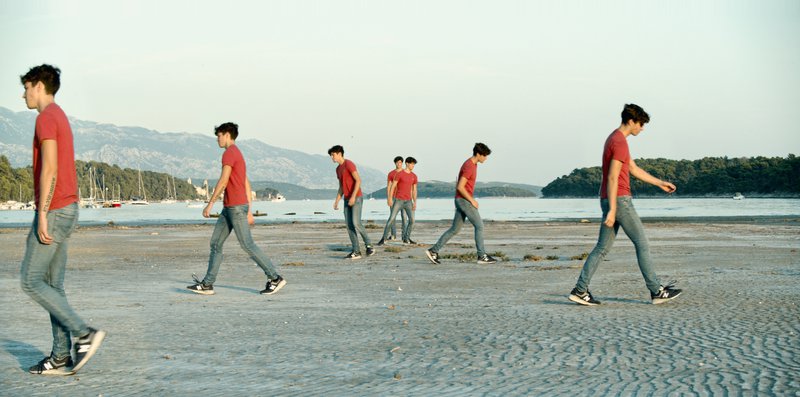
Vernacular narrative and the ’crisis of presence’ in communitarian art-making
With our artistic research projects we want to make an original contribution to the understandings of communitarian art-making, vernacular narratives and the ‘crisis of presence’ – specifically in relation to public rural art, an area so far scholarly neglected. The future presents a tug-of-war, universal values vs. particular interest, public vs. private. This pushes societies, collectives as well as individuals into an inevitable process of de-historification—opening up new "markets" for identity-mongering and re-ethnification. Vernacular narratives are possible links to the past that might project into imaginable futures—the communitarian approach to art is presents itself as third alternative, maybe even a synthesis of the public/private dichotomy.
'Crisis of presence' (crisi della presenza), according to the scholar Ernesto de Martino, signifies the failure of Hegelian synthesis, where past and present events should propel into the future. Tomorrow will come, but it will appear disconnected and haphazard. The falling out of history is overcome through ritual as an even bigger step out of history, thus reclaiming the historicity of everyday life. “I want to believe”, is a well-known quote from the X-files—it anticipates belief as an act of annunciation. In this research project we engage in communitarian art-making—the crafting of depictions with cultural and symbolic value, whose representations reside outside the private as well as the public realm, elaborating on the “stuff of legends”.
A few years ago our artistic work took an unexpected turn as we began collaborating with craftworkers in Mexico and Croatia, building roadside chapels and producing video shrines that set saints in motion. The collaboration around venerative and/or commemorative artefacts challenges the representative paradigm in fine arts and its politics, opening up the creative process to a broader participation and empowerment. The concern with impermanence (migration, the severing of communal ties, unsustainable local economy), the notion of “being acted upon”, the struggle to structure one’s presence in a world where “the other” becomes more and more prominent, is palpable among the indigenous communities of southern Mexico as well as in rural parts of Croatia. What the involved communities have in common are popular narratives connected to vernacular belief.
The historical formation of ideas pertains to the global economic centres of power, whereas vernacular beliefs and rituals exist in a timeless past. Magic maintains a set of non-temporal categories structured through shared narrative processes. We work from the assumption that for many people folk religion and other vernacular beliefs remain valid responses to an elemental “crisis of presence”.
In our work, we aim to redeem the triad past-present-future through re-appropriations of media technology in relation to vernacular narratives. Our projects operate through cycles of field work as well as artistic research and development, intersected with reflection and academic dialogue, bringing together the researcher’s perspective, following Donald A. Schön, as a ‘’reflection on action’’ with the artist’s "reflection in action".
Public engagements and the commons
A series of our art works and projects interrogates power relationships by taking into account local narrative processes and belief systems and how artisans use these in their work. This provides a basis for exploring the creative processes, among both the artisans and the artists, that give rise to new syncretic forms. Following Jacques Rancière, we are “concerned with aesthetic acts as configurations of experience that … induce novel forms of political subjectivity”. We are interested in looking at an expanded field of the aesthetic, and to culture as a space for social interaction, beyond traditional locations for art and aesthetics.
The work of Performing Pictures centres around memory and movement, linking language and moving images, crafting micro-narratives that often require the viewer’s response.
The lion's share of Performing Pictures' field work has taken place in the pueblo of Santa Ana Zegache (Oaxaca, Mexico), where the population of the Zapotec and Mixtec heartland face many social challenges: US migration, the loss of local economy and the severing of communal bonds and family ties. Art, as well as crafts, have come to play a vital role in the revitalization of the community. In a decade-long artistic collaboration with the indigenous artisans and inhabitants of Santa Ana Zegache, we have engaged in cultural and technical exchange, combining traditional crafts with film, photography, interactive technologies and writing. We have made interactive display cabinets, solar-powered road chapels and other public kinetic sculptures (see portfolio). We have preserved the gestalt of 17th century religious statues using home-built pinhole cameras and stop motion animation. (an example here (01:10 min) and of Performing Pictures’ animation method here (01:37 min)).
Together with prof. Karin Becker, Stockholm University, we have disseminated this work in academic contexts, combining short films with research papers—as for example the Journal of Aesthetics and Culture (vol. 6, 2014.)
While working with the community workshop of Santa Ana Zegache we completed a feature-length film-poem, Dreaming the Memories of Now. Journeying into the mythical space of Oaxaca with our five-year-old daughter Katja, we unearth complex stories in which time, memory and nostalgia are continually re-enacted. The film-poem leads us through an ongoing exploration of the artistic process of creation and is an ethereal declaration of love for a place. Stretching the genre of documentary, this experimental essay-film is a composition of far-ranging thoughts, sun-drenched images and scenes of mystery, guided by the poetic voice of the narrator.
We have made a series of permanent public art works in the rural communities of Mexico and Croatia. During these processes we have elaborated upon the concept of “co-commissioning”—namely, the collective channelling of aesthetic preferences and attention to narrative detail in tightly knit communities. While paying tribute to their villages or towns, local craftsmen and craftswomen—bricklayers, masons, tinsmiths, carpenters, seamstresses, wood carvers and painters—have enrolled in the building of complex monuments. All participants have worked as equals with no division of labour at hand in regards to design and implementation. The driving force have been found in a mutual language, that consists of living metaphors enumerating those aspects of life that remain ineffable through the act of story(re)telling.
Technology/Narrative/Materiality/Performance (Gestaltung)
Performing Pictures’ 20 years of artistic practice spans a period characterized by increased media saturation of public spaces. New media technologies, often in hybrid forms, have been used to extend the 'cinematic effect' beyond contemporary art institutions, and to explore how the public and private intersect in different ways.
As artists working with time-based media and interactive/responsive video installations, our projects address issues relating to technology/narrative/materiality/performance. Our research projects often include a study of how artistic Gestaltung changes and is changed both in terms of form and content, by means of technological developments. The focus of the 3-year artistic research project Cinésense funded by Vetenskapsrådet, was how the encounter between spectator and the artistic work is enabled through technical means – see for exemple the papers "Disquiet in the Plasma". and "Designing performativity for mixed reality installations".
The goals of the project were to research and develop different narrative forms for interactive movies and to document the usage of these movies in an ethnographic study with a cultural theory perspective: how they are understood and how this understanding relates to the context.
The project used an artistic perspective to explore the relationship between the space and time in the movie and the interaction in the physical space, and resulted in an understanding of:
What filmic expressions, apart from space/time—e.g. form, colour, and characters—are relevant to maintain a cohesive narrative in interactive film?
How do we describe the participant/spectator/user in this type of work?
The ethnographic study that was carried out focused on specific locations and their relation to how users/spectators use the interactive movie pieces. This starting point led to the core research question: what public spaces are constructed when you consciously involve the user’s body, movements and voice with the content of a movie piece?
The results from CINÉSENSE were further elaborated in another 3-year research project also funded by Vetenskapsrådet, called CHANGING PLACES, investigating how local and transnational events are mediated through public space, focusing on the screen practices that come into play as large format and handheld screens are used in arenas of public life. For this project we were employed part time over two years (2010-2012) as researchers and artists at the Department of Media Studies, Stockholm University in close collaboration with Prof. Karin Becker.
Many of our projects take place in the intersection of different technologies and materials/materialities: moving images and traditional crafts. In our work with media technology we strive for artisanal quality as well as artistic purpose. Crafting new forms of display – such as re-casing LCD-panels into 17th century style shrines, video mapping on mural paintings or extending sensorial circuits for responsiveness and viewer-synchronization – is crucial to our sense of art-making. The technology is not merely a ”container” but carries its own double meaning as both signifier and signified.
